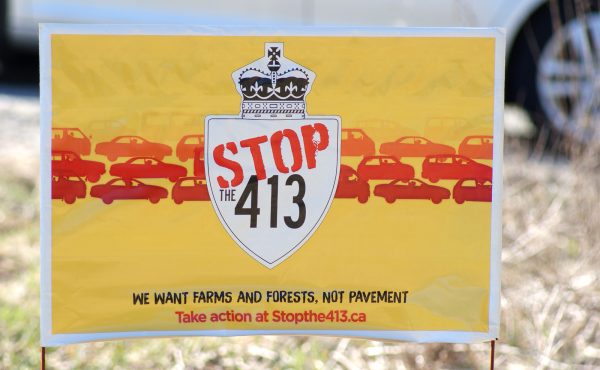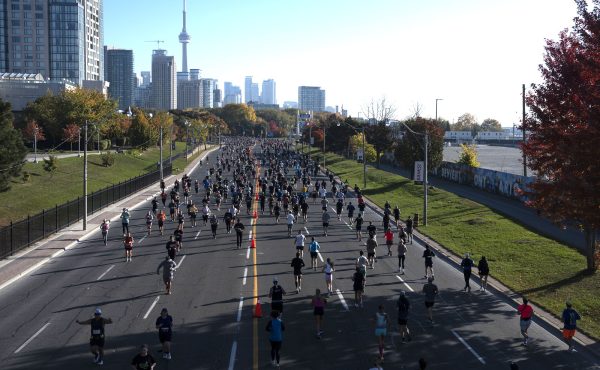
A key theme of the new exhibition Fringe Benefits (reviewed yesterday) that I found very interesting was the idea of “informal urbanism” — where local communities, often but not only ethnic communities, adapt the suburban forms they find themselves in to suit their needs. These projects are driven, not by architects or planners, but rather by the community itself, and they are often well ahead of their municipal governments and financing companies in terms of finding new strategies to make the suburbs their own. The exhibit argues that we need to learn how to notice these initiatives in the suburban landscape, such as street markets, gardens, and street festivals, although other than the Taste of the Lawrence festival they are not all that much in evidence in the displays. On the other hand, this community-driven aspect is also an important aspect of bigger projects that are featured heavily, such as ethnic malls or the “Peace Village” subdivision built around the Ahmadiyya mosque in Vaughan.
These projects often run up against planning rules that have not adapted to the new suburban reality. For example, an interesting project for a Tamil-oriented mall (above) that would serve as a centre for the community bringing together everything from retail shops to professional services to English classes, whose parking lot is designed to double as an open-air market, had to overcome planning rules that prohibited an open air market in the same location as an educational institution.
One of the most important ideas that the ethnic malls have revived is the concept of condominium retail, where store owners or investors buy individual retail stores outright rather than leasing them from a single mall landlord. By contrast to traditional malls dominated by an anchor tenant and chain stores, the condo mall provide an outlet for independent stores and new entrepreneurs, creating a much more dynamic and original sense of place.
This informal urbanism contrasts in the exhibit with the more conventional high-design architect-driven projects (city halls, community centres, schools, hospitals, cultural centres), which are the least inspiring parts of the show. Although the architects talk a good talk and make “gestures” to the community, and their designs are certainly elegant, these plans mostly come across as rather cold and sterile, cut off from their surroundings, monuments to self-contained design rather than integrated parts of the community (although, as is sometimes the case with modern architecture, their interiors tend to be far more inviting and community-oriented than their exteriors). It’s true these projects are by nature more institutional, but it is surely possible for an institutional building to be open, inviting and warm.
These high-design institutional projects give off a very different feel from both the more porous ethnic condominium malls (whose pastiche designs will win no architectural awards) and the ideas from younger architects for incremental improvements to strip-mall arterial public spaces, which integrate much more flexibility that can respond to community initiatives.
It would be nice to think that it’s possible to combine the porous, inviting, flexible, affordable qualities of informal urbanism with the design quality provided by architects. One example from the exhibition that seems to achieve this goal is Teeple Architects’ extension to Thorncliffe Park primary school, which I saw and admired when I walked around Thorncliffe Park in the spring, without realizing who had designed it.
(I unfortunately only have an indirect image of the school extension, on the right below. You can also see the plans on Teeple Architects web page.)

I’ll talk tomorrow about some of the implications I see coming out of this exhibition for Toronto’s Official Plan “Avenues” policies along suburban arterials.




One comment
hello, thorncliffe was a place where i’ve spent my childhood, right now i am very far away from there and it would really please me if you provide more pictures and information about this. thanx